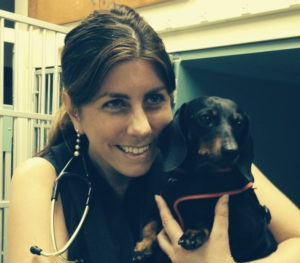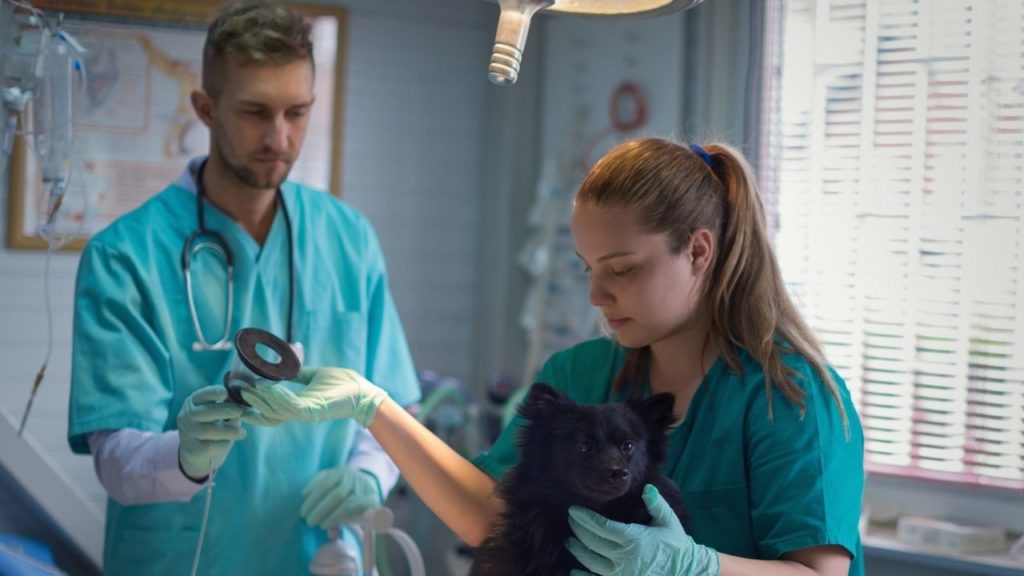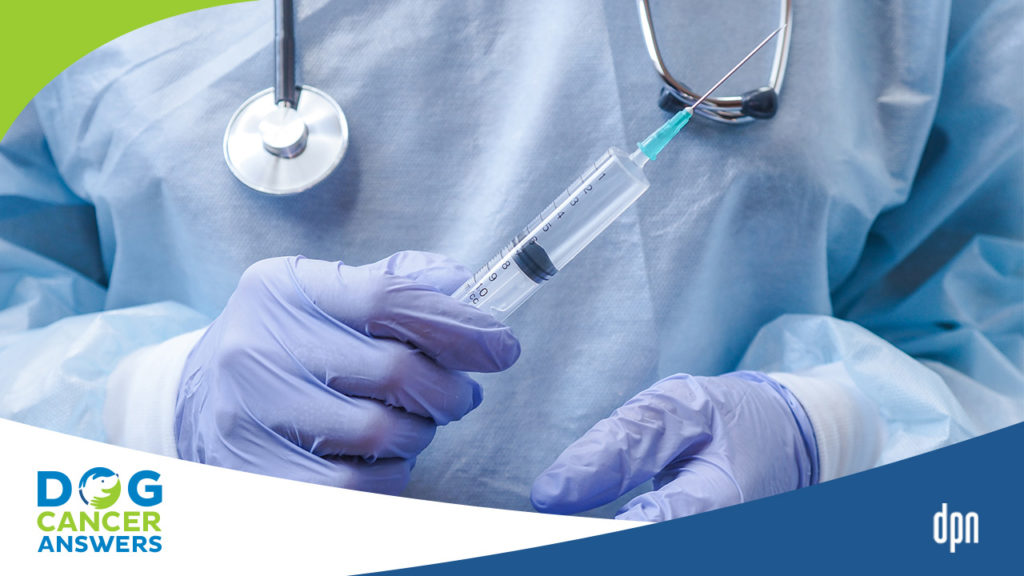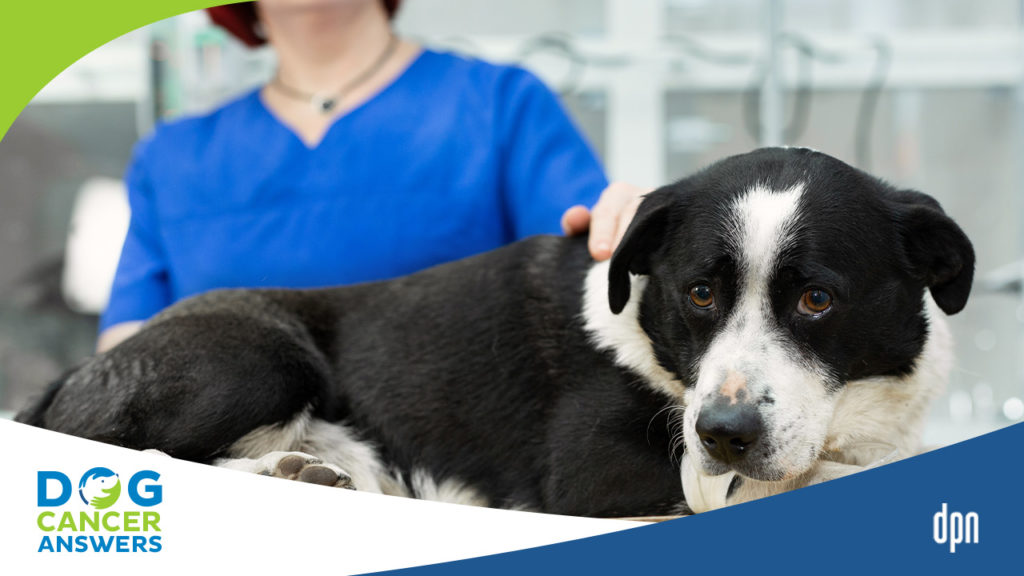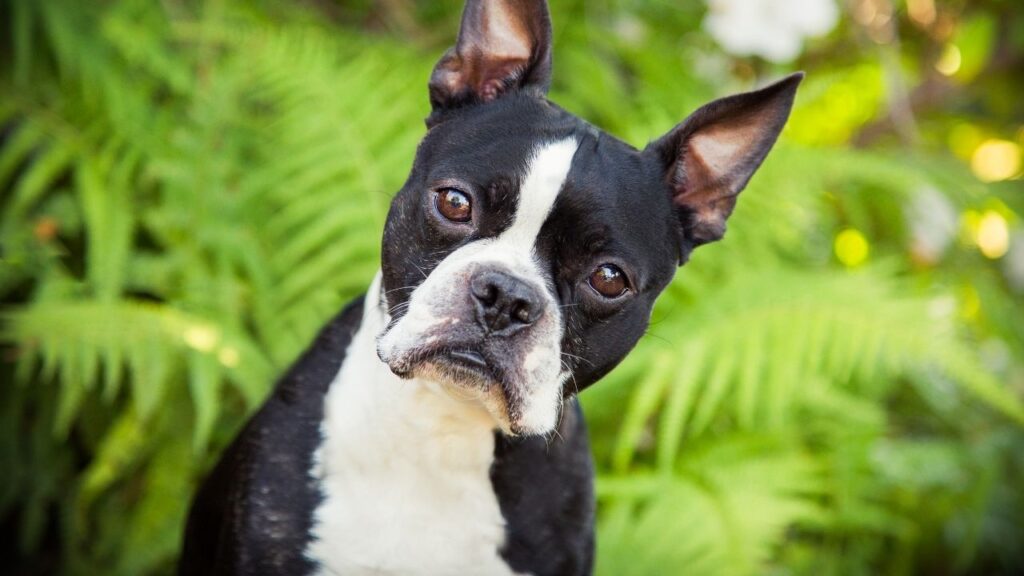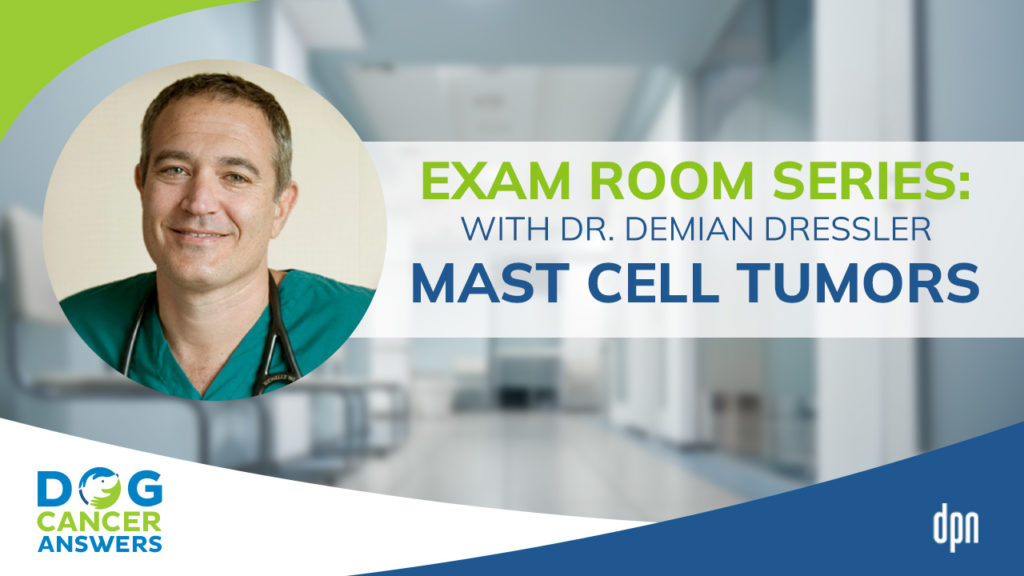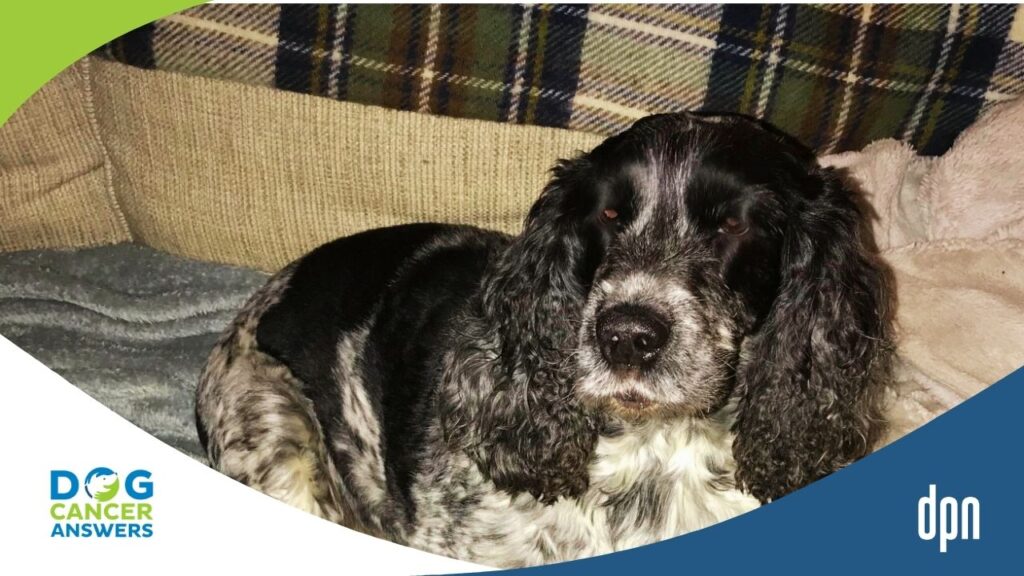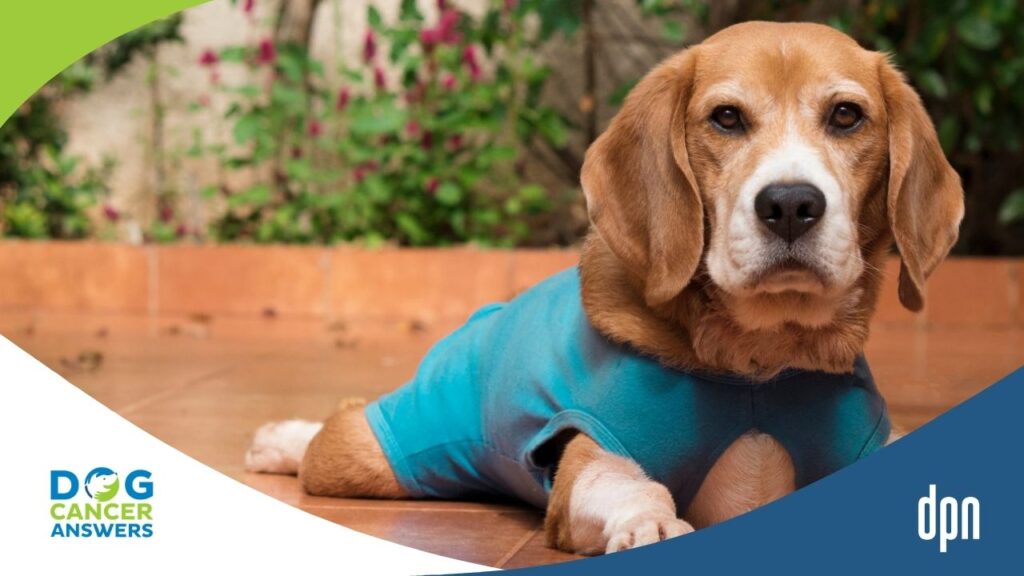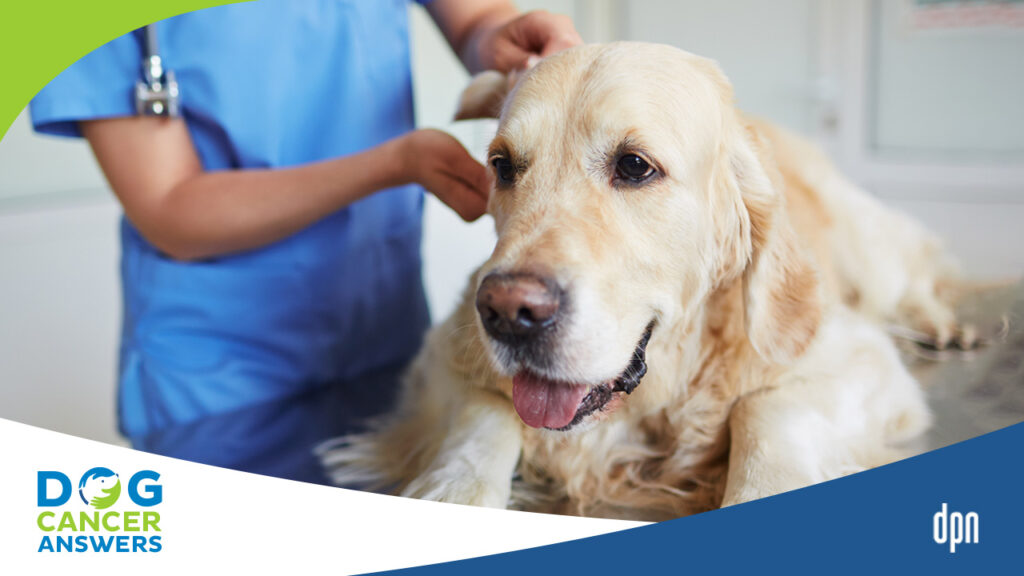EPISODE 184 | RELEASED September 19, 2022
Can Lipomas Hide Mast Cell Tumors in Dogs? Q&A | Dr. Brooke Britton
Is that soft lump on your dog just a fatty tumor… or is it something more sinister? Caller Jenny brings attention to how malignant cancers can look harmless.
SHOW NOTES
Jenny’s dog had some soft, squishy lumps that her vet said were simple lipomas, but after she kept pursuing the matter, turned out to be mast cell tumors. The good news is that true lipomas can’t turn into mast cell tumors. So what happened with Jenny’s poor pup?
Veterinary oncologist Brooke Britton joins us again to discuss the similar appearance of fatty tumors and MCTs. And just because one lump on your dog is benign doesn’t mean that every other lump will be. Mast cell tumors can imitate a variety of other lumps and bumps that you might find on your dog, so it is important to do at least a fine needle aspirate to check out any lumps that are new, growing, or painful.
Links Mentioned in Today’s Show:
[00:00:00] >> Dr. Brooke Britton: Mast cell tumors can look like and feel like lipoma so maybe there was an assumption made that it was a lipoma when actually it was something else.
[00:00:09] >> Announcer: Welcome to Dog Cancer Answers, where we help you help your dog with cancer.
[00:00:15] >> Molly Jacobson: Hello friends. On today’s show, we are taking a listener call from a caller named Jenny, who is calling our attention to the need to get all lumps and bumps aspirated and figure out what they really are. To listen to Jenny’s question and provide her own answers, oncologist Dr. Brooke Britton is joining us.
Dr. Britton, thanks for joining us today.
[00:00:41] >> Dr. Brooke Britton: Thank you for having me.
[00:00:42] >> Molly Jacobson: So our call today is from Jenny. Let’s listen.
[00:00:46] >> Jenny: Hi, my name is Jenny and I’m from Minnesota. My question is related to mast cell tumors. I am wondering how common is it for a mast cell tumor to be hidden in a lipoma? I am also wondering why regular veterinarians don’t realize that this can occur, and I guess I’m hoping that this will help someone else. My dog had multiple mast cell tumors.
They were misdiagnosed as lipomas and our vet did not even realize, actually two vets in that office did not even realize that mast cell tumors can be hidden in lipomas. And when we saw the oncologist, he was saying how it’s quite common. And I never realized that just the regular veterinarians really don’t have much schooling or knowledge in oncology.
So I’m hoping that, uh, people will get out of this to be aware that a lipoma might not – we had a vet tell us once a lipoma, always a lipoma, and blew me off after our dog had a degranulation event, and it was cancer. And also for people to get an opinion with an oncologist because they are the, the expert.
Thank you so much.
[00:02:13] >> Molly Jacobson: There is a lot there. First of all, I’m curious, do lipomas often hide mast cells, is that common?
[00:02:21] >> Dr. Brooke Britton: So they can. You can have a tumor within a tumor. So tumor just means growth. You can have a mast cell tumor within a benign lipoma. That’s actually been reported in case reports, and we we’ve all seen that as well as oncologists. Mast cell tumors are also a very common skin tumor, or tumor underneath the skin as well. And they’re often called the great imitator because they can look and feel like many other types of tumors.
So my question back for Jenny would be, were these tumors actually aspirated? Was there a fine needle aspiration that was done to confirm, or at least support, a suspicion of lipoma or was it just called a lipoma because of the way it looked and felt?
Sometimes, again, mast cell tumors can look like and feel like lipoma so maybe there was an assumption made that it was a lipoma when actually it was something else. If a fine needle aspirate had actually been done and they were getting fat cells back that read as lipoma, sometimes that can happen too, because if the mast cell tumor is small and it’s hidden within the fatty tumor, we may not be aspirating into the actual mast cell part with any given aspirate, maybe we’re just aspirating into a fatty part. And so in that way, sometimes even with best intentions to diagnose a tumor, a mast cell tumor can be missed. One of the ways that we can try to prevent this from happening or make sure that we know that a lipoma is really actually a lipoma is to monitor it for growth over time.
Lipomas can grow over time. And Jenny is correct in that once a lipoma, it, it is always a lipoma, if that’s actually what we’re dealing with. So a lipoma that’s a true lipoma or fatty tumor cannot transform and become a malignant cancer. So it’s not like a fatty tumor can become a mast cell tumor if given enough time. But you can have the two concurrently.
So any tumor that grows quickly or begins to ulcerate and bleed or change in a concerning way, or seems painful, that would be a tumor that, if we had aspirated it once before, maybe we’d want to try doing that again to make sure that it’s actually a fatty tumor and not something else, or maybe take a small biopsy and make sure that that’s actually what we’re dealing with.
[00:04:37] >> Molly Jacobson: Okay. That’s really helpful. So a lipoma does not transform into a malignancy, but it could possibly hide another tumor type that’s underneath, especially mast cell tumors, which are so changeable in their appearance and their size, and they come and they go and they grow and they shrink and they do all sorts of crazy things and look like all sorts of other things.
As you said, they’re called the great imitators. I’ve also heard them called trickster tumors?
[00:05:03] >> Dr. Brooke Britton: Yes.
[00:05:04] >> Molly Jacobson: And they really are tricky. And it sounds like in this case, perhaps the tumors that her dog had were assumed to be lipomas and were actually mast cell tumors or, um, maybe a mast cell tumor, maybe even right next to or underneath a lipoma.
Is that possible?
[00:05:22] >> Dr. Brooke Britton: It is. And I’ve had circumstances where I’ve done an aspirate before and it appears to be fatty, even if I send it out to a pathologist and it comes back as a fatty tumor. But yet, sometimes tumors don’t exfoliate or shed their cells as readily when you aspirate them. Usually mast cell tumors do, but there is always a chance that you are doing the aspirate correctly, but you’re just not getting enough cells back.
Maybe there’s fibrous tissue in the tumor, or maybe the tumor is in a difficult location to aspirate, or it’s very small. And so sometimes even with best intention and good technique, we don’t actually get the quote unquote "real answer" the first time we do the sample. So that’s why monitoring these growths over time is important because if they change or if there’s a degranulation event, like Jenny alluded to, then we understand that truly benign lipomas would not do something like that.
So we need to go a little bit further and, and investigate further to figure out what’s actually going on.
[00:06:20] >> Molly Jacobson: Right. Okay. Let’s take a short break here. And then when we come back, I wanna ask you more about Jenny’s question. How do we get an oncology appointment these days?
And we are back with Dr. Brooke Britton.
There are so few oncologists in the United States of America already, and with the pandemic wait lines just exploded. So some people are waiting up to six months to see a specialist for their dog’s cancer. What do you say to people like Jenny who are hoping to get that expert opinion sooner rather than later, but have to wait a really long time?
[00:07:03] >> Dr. Brooke Britton: That’s always the, the challenge, um, nowadays, is getting in to see specialists for care, much like on the human side, because they’re just so many patients in need of our care and not enough of us really to go around. And that’s why we partner with general practitioners to make sure that we can work parallel to them and as a team with them so that it doesn’t necessarily have to have, or get to a point where an oncologist is critical.
Sometimes that is the case, but most oncologists are very willing to work with GPs in their local area to do phone consults or to have, in some cases, telehealth, where we could have that initial conversation and try to, so to speak, "triage" those cases as to whether or not we feel that they need to more urgently come to see an oncologist or whether we can help the general practitioner manage them in the general practice setting, at least initially, until they’re able to see a specialist.
[00:08:00] >> Molly Jacobson: Sure. If I were going to my GP and I had a suspicious lump, he would make a referral to an oncologist. He wouldn’t try to treat it in his office. However, today, during COVID, and especially on the island I live on, you can wait six to eight months to see a specialist of any kind.
So that is a really common thing. And it would be really nice to have my GP just be able to call an oncologist, and that’s basically what people can ask for, right? I mean, you can ask your GP, just, can you please get this checked, can you have your analysis worked out by an oncologist? Can we do a referral for this? And you don’t have to actually go necessarily.
[00:08:42] >> Dr. Brooke Britton: Absolutely. Many oncologists are willing to get on the phone or correspond via email. Usually it’s someone in the local area – they can call widely in the U.S. or even abroad if they want to, but usually it’s someone in the local area in the event that the cat or dog does need to go see an oncologist more urgently. But absolutely. There’s always a chance to phone a friend, so to speak.
[00:09:06] >> Molly Jacobson: And veterinarians generally are friendly people. So it seems like they, they’d have someone they could call.
[00:09:11] >> Dr. Brooke Britton: We try to be. Absolutely. And if, if a vet is not sure, if a GP is not sure who to call, usually they can look up on the ACVIM website, which is the American College of Veterinary Internal Medicine. So it’s ACVIM.org. You can go under Find A Specialist and even just search by state.
Even if you don’t know a specific name of an oncologist, you can see the oncologists that are boarded that are in a state or region near you or them, and many times the contact information is on there. So GPs can reach out. And that’s a good place to start if they don’t know where else to start. Some of the common laboratories that cytology and biopsy samples are sent to, like Antech or IDEXX, also have oncologists that are available for phone consults by calling the lab.
So that’s also a good place to start.
[00:10:00] >> Molly Jacobson: So this is really something that people can ask their vet to take a look at with an oncologist just making sure that they’re double checking everything. And then they could refer out if necessary.
[00:10:11] >> Dr. Brooke Britton: Absolutely.
[00:10:12] >> Molly Jacobson: Wonderful. Is there anything else that you want to respond to Jenny about?
[00:10:18] >> Dr. Brooke Britton: I think, again, Jenny makes a really good point in that, you know, it seems as though she was pretty persistent in her concern for these growths, especially when the degranulation event occurred. And sometimes it is helpful too, on the companion animal owner’s end, to be persistent like that when you have a concern.
When you see a change or growth, or you just don’t like the way something looks, being persistent is helpful. Because even if your veterinarian sees your dog once and says that doesn’t look too concerning for me, they may see many, many, many patients in the course of that week and the coming month, and they may not immediately remember, oh, we have to call and check and see, did that grow, did that not grow, how are we doing.
And so it doesn’t mean to put the entire responsibility on the pet owner, but being persistent like that is a very good thing because it keeps that tumor and that growth in the forefront of your veterinarian’s mind and it also helps relay your concern. And many times I’m very responsive to concerns like that.
Even if I don’t think it’s something to be as worried about, if someone says, look, I, I am concerned about this, it’s helpful to investigate earlier rather than wait and see, because if the tumor does grow considerably or it changes, we may not have as many treatment options on the table down the line. So her persistence was a good thing, especially in this case, when her dog was getting multiple tumors.
[00:11:52] >> Molly Jacobson: Right. That’s so hard when you’re getting multiple tumors. It’s very frustrating, obviously, for everybody involved, but certainly for the dog lover to look at all of these lumps and say, well, this one’s fine, but this one isn’t.
[00:12:05] >> Dr. Brooke Britton: And so many dogs are very lumpy bumpy. And so it, over a lifetime, you know – this is why we make body maps as well. So we physically draw the tumors, we measure the tumors and we keep track of that. It’s really, really helpful for multiple, multiple tumors, because even in dogs that I see regularly, sometimes I’m like, uh, was that there before?
[00:12:26] >> Molly Jacobson: Uh-huh.
[00:12:26] >> Dr. Brooke Britton: Because sometimes you just, because of the number of patients you see, or even if you’re very, very diligent with attention to detail, it’s just hard to keep track of a very lumpy bumpy dog. So body maps can be really helpful, and they’re a part of the medical record so we can track the tumor growth over time and new tumors over time.
[00:12:44] >> Molly Jacobson: And that seems like something that every dog lover should be doing at home. Do a monthly lump and bump check and just make sure that they know what’s on their dog’s body and how big it is and where it is so that they can track it over time and know whether there’s something to be concerned about to bring to their vet’s attention.
[00:13:01] >> Dr. Brooke Britton: Yeah. It’s so important. It’s hard, you know, admittedly, we all have very busy lives and, and sometimes these things can be hard to keep track of, again, especially in a very lumpy bumpy dog. But it’s always helpful for people to keep track of those things at home and monitor those things at home as well.
That’s part of the team effort, because I’ve had people that have felt something very, very small that I may not have been able to feel, and they’ve been watching it and tracking, you know, minute growth over time. And it’s really, really helpful that we all have eyes and hands on our dogs so that we can, we can all make sure that we’re on top of these new growths.
[00:13:43] >> Molly Jacobson: Well, thank you, Dr. Britton, for answering our question today.
[00:13:47] >> Dr. Brooke Britton: Absolutely.
[00:13:50] >> Molly Jacobson: And thank you, Jenny, for that call. So this brings me to the real takeaway I had, which is this idea of body maps and being our own dog’s best advocate, that we really do need to check our dog for lumps and bumps, and we need to track them. And I know Dr. Ettinger, Dr. Sue Cancer Vet, says once a month, we do a nose to tail check, and I think it’s a really good idea.
This has been a really interesting show. I hope it helps a lot of people just become more aware of what we need to do at home to check our dogs for lumps and bumps, and also to advocate for our dogs. As Dr. Britton pointed out, Jenny really advocated for her dog on her dog’s behalf with her veterinarian and that got her better care.
If you’ve got a question, call our Listener Line at (808) 868-3200, and we’ll be sure to get it answered on a future episode of Dog Cancer Answers.
For all of us here at Dog Podcast Network, I’m Molly Jacobson, and we’re all wishing you and your dog a warm Aloha.
[00:14:58] >> Announcer: Thank you for listening to Dog Cancer Answers. If you’d like to connect, please visit our website at dogcanceranswers.com or call our Listener Line at (808) 868-3200. And here’s a friendly reminder that you probably already know: this podcast is provided for informational and educational purposes only. It’s not meant to take the place of the advice you receive from your dog’s veterinarian.
Only veterinarians who examine your dog can give you veterinary advice or diagnose your dog’s medical condition. Your reliance on the information you hear on this podcast is solely at your own risk. If your dog has a specific health problem, contact your veterinarian. Also, please keep in mind that veterinary information can change rapidly, therefore, some information may be out of date.
Dog Cancer Answers is a presentation of Maui Media in association with Dog Podcast Network.
Hosted By
SUBSCRIBE ON YOUR FAVORITE PLATFORM
Topics
Editor's Picks
CATEGORY
